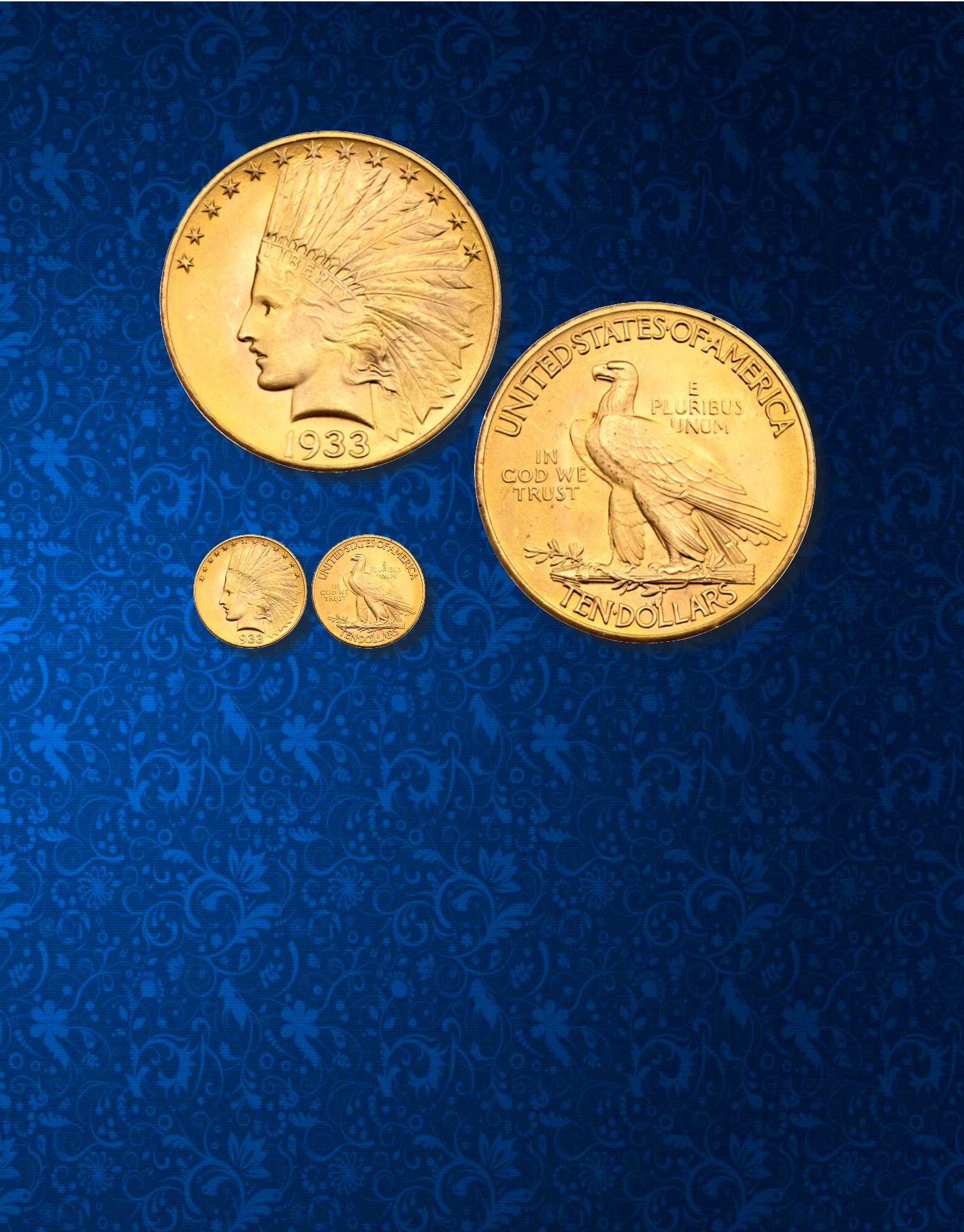

195
1638
1933. PCGS graded MS-66.
CAC Approved
.
The legendary 1933 Indian Eagle is represented by no more than 40 examples are estimated
to have survived. This one is likely to be the very finest known, although one other exists at this grade level seen by NGC. That particular coin
was last sold by Stack’s in October of 2004 for $718,750 and has not been seen at auction since that time. This coin being offered now, was not
known to most of the numismatists of this generation, and had never been certified until just prior to this auction. It is the finest seen by PCGS.
Well struck, very frosty, and the finest example we have ever seen.
The mintage in the early months of 1933 started off with a bang, a total of 312,500 pieces were struck. However, worldwide troubles were
brewing that would alter the course of many countries. The price of gold had been set artificially low in the early 1920s for the amount of paper
money in circulation. By the 1930s pressure was building on various countries gold reserves, the flow of gold lost all balance and international
transactions saw a dramatic increase in the flow of gold away from country after country. In order to stem the tide, most of the European
countries ceased to honor their prior pledges and “went off” the gold standard. This put further pressure on the countries that remained on a
gold standard. In early 1933 the international pressure focused on the United States, whose tremendous gold reserves were under what seemed
to be worldwide attack. Armoured cars lined up in New York to take the gold from the reserve banks to the nearby docks bound for overseas as
demand for payment in gold bullion continued.
March 4, 1933, Franklin D. Roosevelt assumed the presidency of the United States and he took immediate steps to halt this flow of gold out
of the country. The Great Depression was worsening, and something had to be done. By following other European countries, Roosevelt took
America off the gold standard, calling in all non numismatic gold coins from the population. A bank holiday was declared and the gold reserves
were revalued higher at the stroke of his pen.
The first shipment of 1933 eagles had taken place on January 19, 1933. Other shipments followed and some of these were released through the
normal course of events, up to the day before March 4, 1933 when Roosevelt was inaugurated. This is the open window where people in Amer-
ica could have obtained a 1933 $10 gold piece and kept it, but given that only 40 so exist today, not many had the wherewithal, time or money
to purchase one of these before the window was slammed shut. Unlike the 1933 double eagle, which is illegal to own (other than the sinlge
specimen from the Farouk Collection) it at least is possible to possess this issue. Additional reading can be found in the book Illegal Tender: Gold,
Greed, and the Mystery of the Lost 1933 Double Eagle by David Tripp.
Pop 1; none finer. Tied for the finest at either grading service. We
feel it is even better than the NGC MS-66 (PCGS # 8885)
Estimated Value $750,000-UP
Ex. US Gold from a prominent midwestern family collection.



















